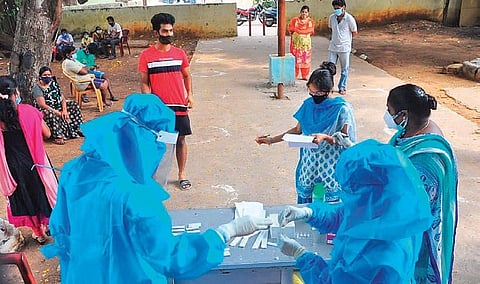

NEW DELHI: A comparatively younger population with an average age of 44 years has been infected more in this Covid wave, the government said on Thursday, highlighting there was significantly less use of drugs for treatment this time.
Addressing the weekly press conference, ICMR DG Balram Bhargava said in this Covid wave, sore throat was seen more in the patients.
A slightly younger population having an average age of 44 years was infected more in this wave in comparison to the previous ones, he said.
In the earlier waves, the average age of the section of the population infected was 55 years, Bhargava added.
The conclusion was drawn from the National Clinical Registry of COVID-19, in which data was collected about hospitalised patients from 37 medical facilities.
"There were two time periods which we studied. One was November 15 to December 15, which was presumed to be dominated by the strain of Delta, and the other was December 16 to January 17, when the presumed dominant strain was Omicron," he said.
As many as 1,520 hospitalised individuals were analysed, and their mean age during this third surge was about 44 years, a slightly younger population, Bhargava said.
"Having said that, the co-morbidities present in this younger population were pretty high. About 46 per cent had co-morbidities, these are the people who are younger. But nearly half of them had some co-morbidities and their symptoms were much less. But the predominant symptom, which is higher in this population during the January period, was sore throat. Sore throat was more common than the earlier period," he said.
"We also found that there was a significantly lesser use of drugs during this surge and significantly improved outcomes with much less complications of renal failure, acute respiratory distress syndrome (ARDS) and others," Bhargava said.
Looking at the outcomes, Bhargava said the death rate was 10 per cent in vaccinated people and 22 per cent in those unvaccinated.
"In vaccinated versus unvaccinated, death was 10 per cent (91 per cent co-morbidities) vs 22 per cent (83 per cent co-morbidities). So really nine out of 10 had co-morbidities in this young population who died and were vaccinated. Of the unvaccinated, 83 per cent had co-morbidities. So not being vaccinated and having co-morbidities really are the drivers which decide the course of the patient," Bhargava said.